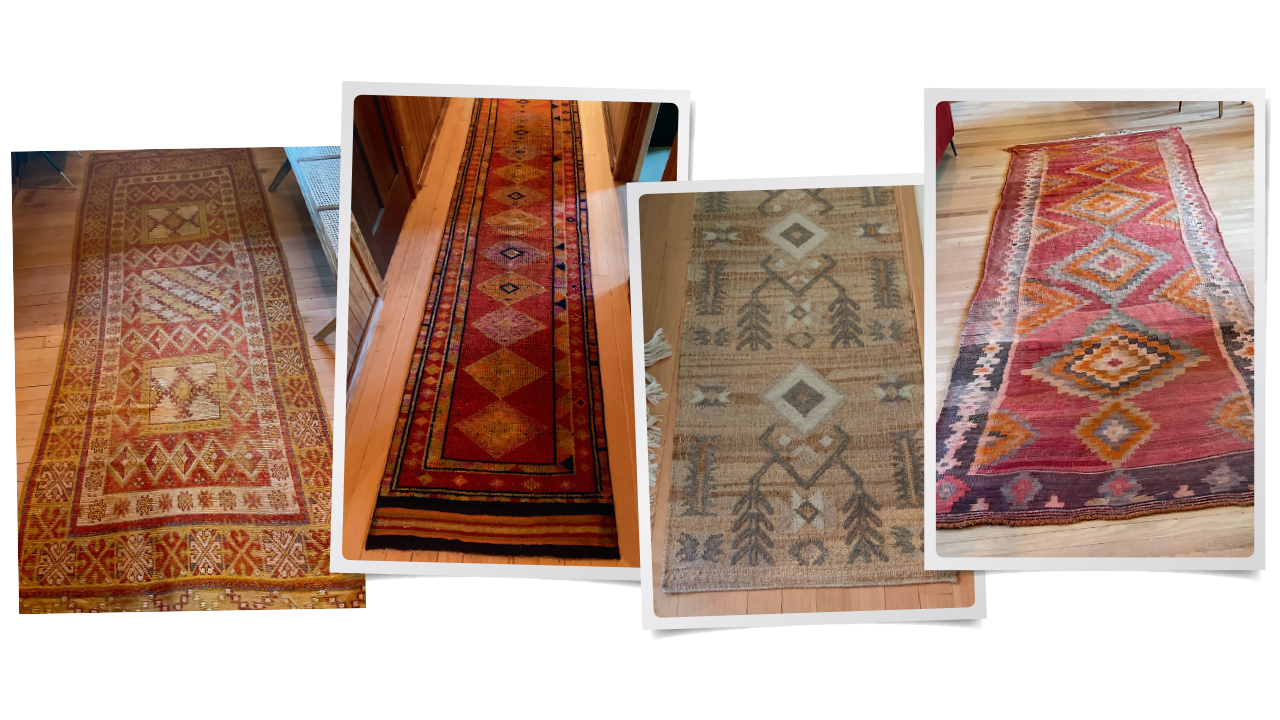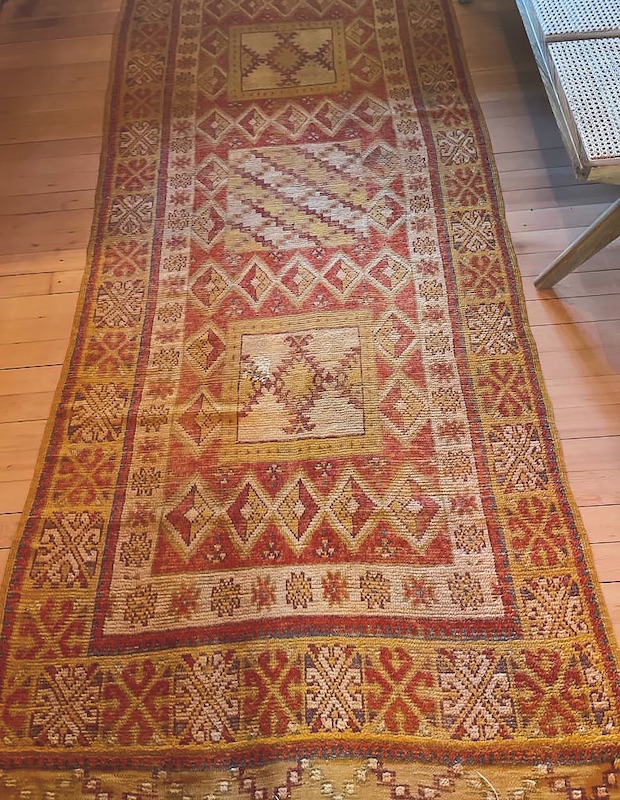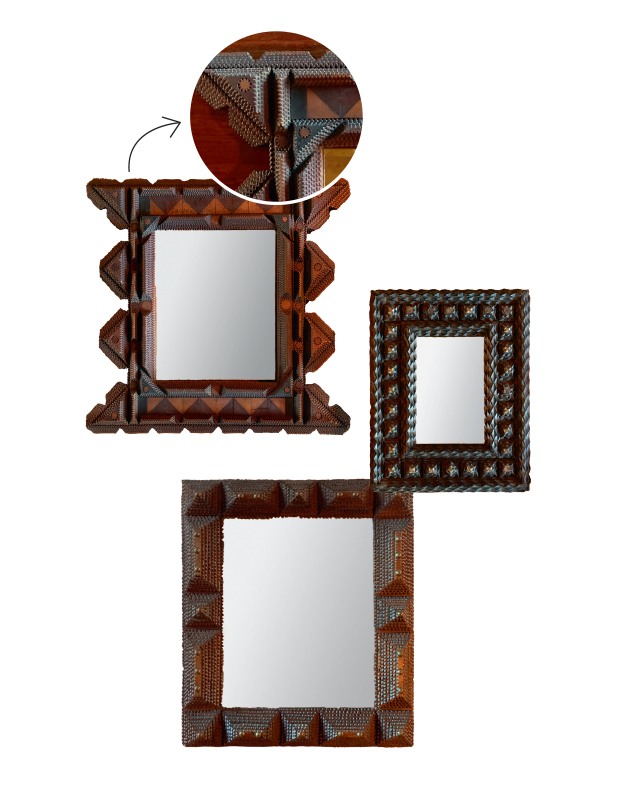Decorating & Design
The Lakehouse: Lynda Reeves Chooses Vintage Rugs For Her Four-Season Getaway
Updated on November 28, 2023

This is my story of designing our renovation of a century-old lakehouse in Ontario. Each month, I’ll offer a new chapter on the challenges and solutions, and a peek at our progress. You’ll be able to see the actual house come together on new episodes of our video series The Lakehouse.
When we bought our lakehouse and I realized that almost every room would present an envelope of caramel-toned wood walls, I needed to get a formula going in my head. What would the main elements be to furnish and decorate this house? The all-wood interior was new territory for me. One thing was for certain: old kilim and low-pile rugs would be a big part of the scheme. What better backdrop for the subtle beauty of those soulful rugs than the soft, light tones of the old fir floors?
My collection is composed of vintage rugs from Turkey, Morocco, Algeria, Afghanistan and Tunisia, with names like Herki, Khotan and Kars. Most are circa–1920 to 1950. They’re mostly kilims or “flatweaves,” and they’re usually classified as tribal rugs because their makers were members of nomadic tribes migrating through North Africa and the Middle East. I love them for their soulful patterns and soft, subtle coloring that natural dyes and years of gentle wear will produce. If you plan to collect and decorate with vintage rugs, choose by color palette and find patterns that look good laid side by side. Then, move rugs around and around your house until the sight lines reveal a pleasing array, and a great view clicks into place.

I come by my love of vintage rugs honestly. My first awareness came at age 15, when I was dragged to a carpet warehouse in Beirut to sit on piles of folded rugs while my mother and aunt spent hours shopping. I remember watching men unroll rugs, one after the other, while my aunt explained why none were right. I agreed.
And then, suddenly, a vibrant, geometric-patterned bold rug appeared and I told my mother that this was the one! No one else thought so, and that was the end of my rug odyssey until I became a decorator and collector of vintage rugs in the mid-1980s. This rug is an antique Turkish piece from my collection.

Since then, old rugs have been a passion and my collection has grown, but not enough to fill the lakehouse — especially the long hallways. I needed more runners. My first go-to place is always Elte. Over the years, I’ve learned to seek out their stash of vintage runners piled in a back corner. This is a vintage Herki runner from Elte, circa-1930.

Not all of my rugs and runners are vintage. This is a new hand-stitched runner from the Lemieux et Cie collection by Christiane Lemieux at Anthropologie.

When I’m lucky, I find some real beauties like the ones in this gallery. This is a vintage flatweave kilim from my collection. I still need a few more rugs, so the hunt is still on.

A new category of collecting has started, thanks to my friends Debra and Barry Campbell. Last week, Barry brought me three small mirrors in fabulous hand-carved frames that are part of a folk art tradition called tramp art. This technique of chip carving is believed to have been brought to North America by journeymen who had apprenticed under master carvers from Germany and Scandinavia.

Available materials give rise to craft forms and, in this case, empty cigar boxes, pine packing crates and other salvaged bits of wood were collected, layered, then chip carved and stained into beautiful boxes, frames and other objects.

By 1880, tramp art was a hugely popular art form and, here in Ontario, there are stories of new immigrants arriving in Kitchener-Waterloo and giving tramp art as gifts to thank their Amish and Mennonite hosts.

I love our tramp art frames. I may leave them as mirrors, or try framing fabric or old photos. I saw this done by Ralph Lauren for one of his dreamy cottage home collections in an ad, just last month. I kept the page in a file, not knowing what I was looking at, but now I do! That’s the best part of collecting — there’s always a story.
House & Home October 2021


